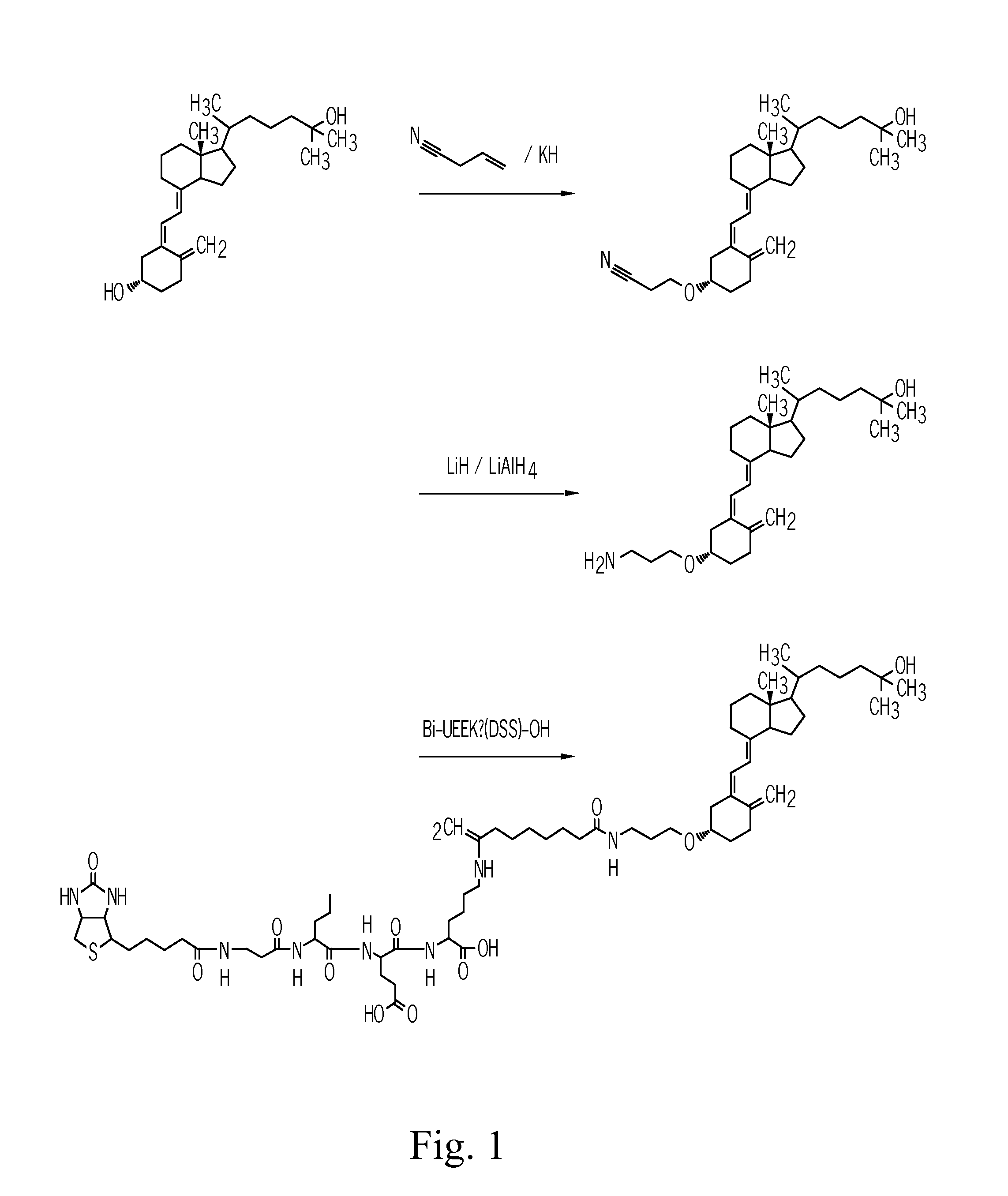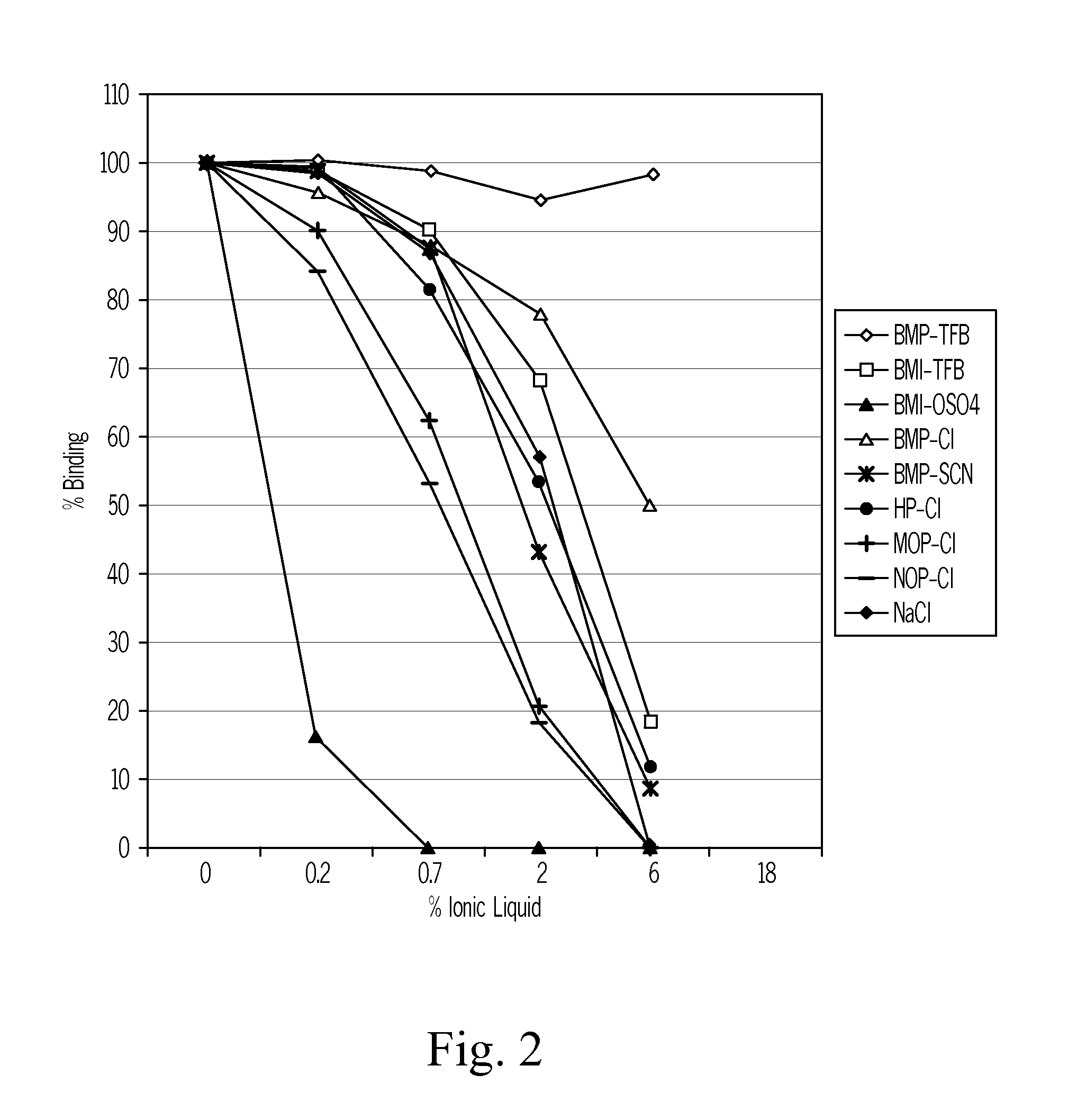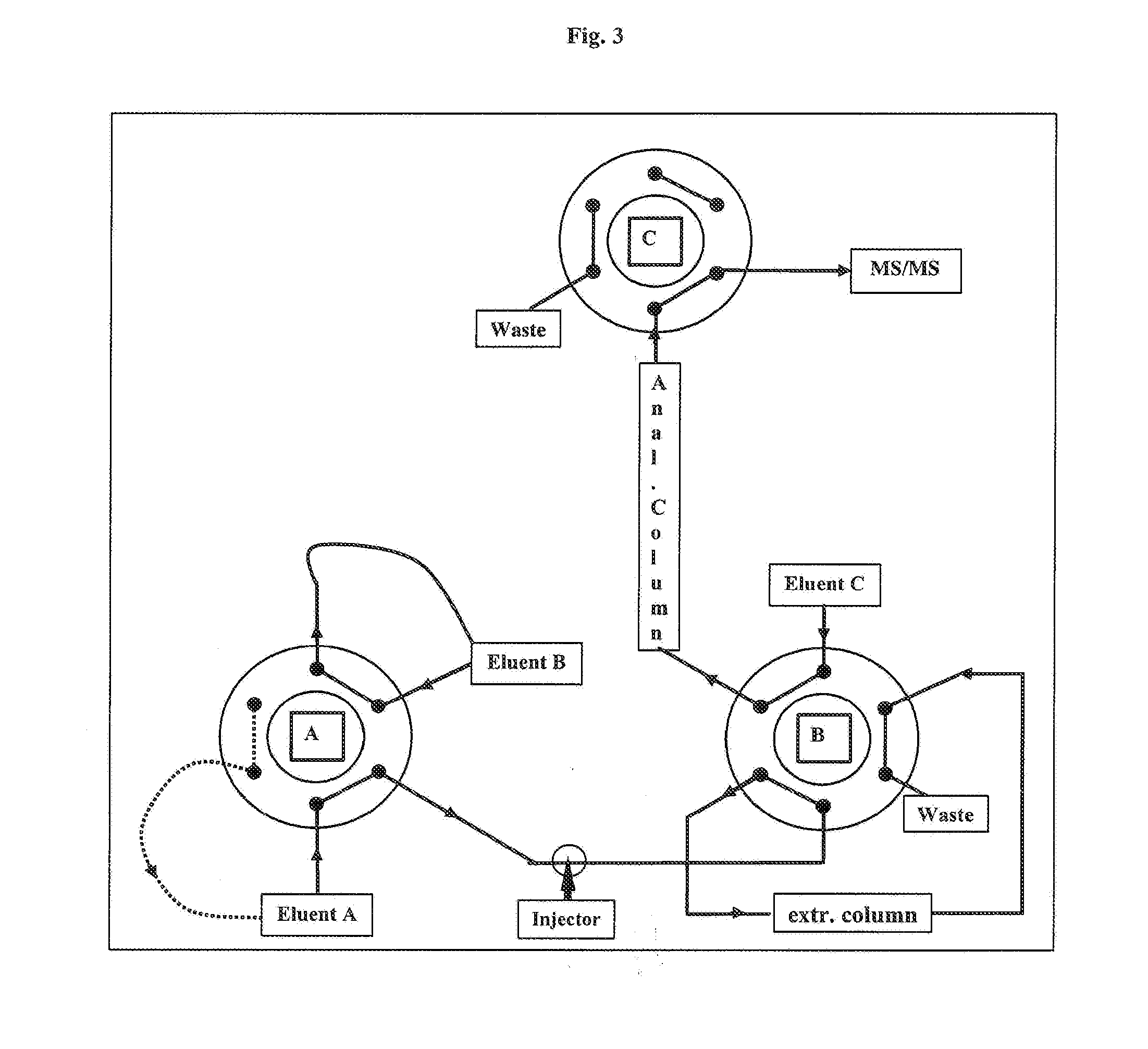Measurement of vitamin d
a technology of vitamin d and metabolites, which is applied in the field of measuring a vitamin d metabolite, can solve the problems of enormous hiccup of measurement, lack of useful indication of vitamin d status of subjects, and lack of 1-hydroxylated metabolites, etc., and achieve the effect of eliminating the need for extraction
- Summary
- Abstract
- Description
- Claims
- Application Information
AI Technical Summary
Benefits of technology
Problems solved by technology
Method used
Image
Examples
example 1
Synthesis of a biotinylated 25-hydroxyvitamin D3-conjugate
[0089]The steps used in the synthesis of the biotin-25-hydroxyvitamin D3-conjugate are depicted schematically in FIG. 1.
[0090]In this synthesis 25-hydroxyvitamin D3 is chemically activated at position 3 of the vitamin D scheme depicted in Formula I. In 25-hydroxyvitamin D3 position 25 of Formula I is carrying an OH-group,
1.1 Synthesis of a 25-hydroxyvitamin D3-3-2′-cyanoethylether
[0091]In a round-bottomed flask with three necks and equipped with an internal thermometer 20 mg (50 μmol) 25-hydroxyvitamin D3 (Sigma-Aldrich, no. H-4014) are dissolved in 10 ml dry acetonitrile under argon atmosphere. The solution is admixed with 1.5 ml tert.-butanol / acetonitrile (9:1) and then cooled down to 6° C. in an ice bath. Then 820 μl of an acrylnitrile solution (from a solution of 86 μl acrylnitrile in 1.0 ml acetonnitrile) are added and the mixture is stirred and incubated for 15 min at 6° C. Thereafter 205 μl of an organic potassiumhydri...
example 2
Assessment of Release of Vitamin D from Vitamin D Binding Protein
[0095]The BIACORE system is used to assess whether a reagent considered to be a potential candidate for releasing vitamin D from vitamin D binding protein will be efficient in releasing of vitamin D binding protein to a vitamin D metabolite.
[0096]A sensor chip coated with streptavidin (Sensor Chip SA, BIACORE AB, BR-1000-32) is used for immobilization of a biotinylated vitamin D metabolite of interest. The assessment is best performed by use of the vitamin D metabolite 25OH vitamin D3.
[0097]The sensor chip is first incubated with a saturating concentration of biotinylated 25-hydroxyvitamin D3, Then the chip is loaded with a saturating amount of vitamin D binding protein. Then the vitamin D binding protein saturated chip is incubated with a sodium chloride solution one the one hand and a candidate vitamin D releasing reagent in various concentrations on the other hand. The release of vitamin D binding protein is monitor...
example 3
Method for the Quantification of Circulating 25-Hydroxyvitamin D3 Using Liquid Chromatography-Tandem Mass Spectrometry
[0100]A straightforward isotope dilution liquid chromatography-tandem mass spectrometry method for detection of 25-hydroxyvitamin D3 has been developed. The method is similar to Vogeser et al. supra, in brief this method works as follows:
[0101]Stable isotope-labeled 25-hydroxyvitamin D3 is used for internal standardization. Acetonitrile is added to the sample in order to release the analyte from vitamin D binding protein. Manual protein precipitation is performed, followed by online automated solid phase extraction with direct transfer to the tandem mass spectrometry system. Atmospheric pressure chemical ionization (APCI) in the positive mode is used. For native 25-hydroxyvitamin D3, the transition 401>257 m / z is recorded. For the internal standard labeled with six deuterium atoms, the transition 407>263 is recorded.
Analytical Procedure:
Standards
[0102]25-hydroxyvitam...
PUM
| Property | Measurement | Unit |
|---|---|---|
| pore size | aaaaa | aaaaa |
| pore size | aaaaa | aaaaa |
| diameter | aaaaa | aaaaa |
Abstract
Description
Claims
Application Information
 Login to View More
Login to View More - R&D
- Intellectual Property
- Life Sciences
- Materials
- Tech Scout
- Unparalleled Data Quality
- Higher Quality Content
- 60% Fewer Hallucinations
Browse by: Latest US Patents, China's latest patents, Technical Efficacy Thesaurus, Application Domain, Technology Topic, Popular Technical Reports.
© 2025 PatSnap. All rights reserved.Legal|Privacy policy|Modern Slavery Act Transparency Statement|Sitemap|About US| Contact US: help@patsnap.com



